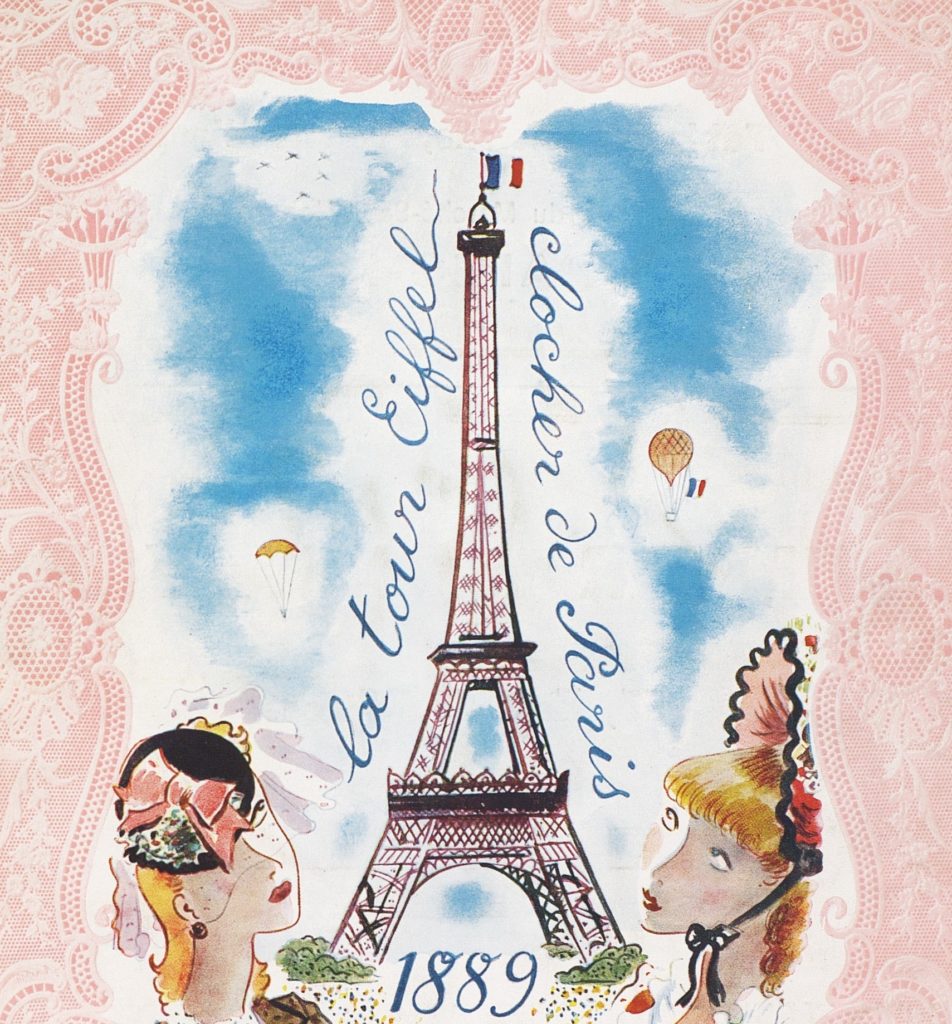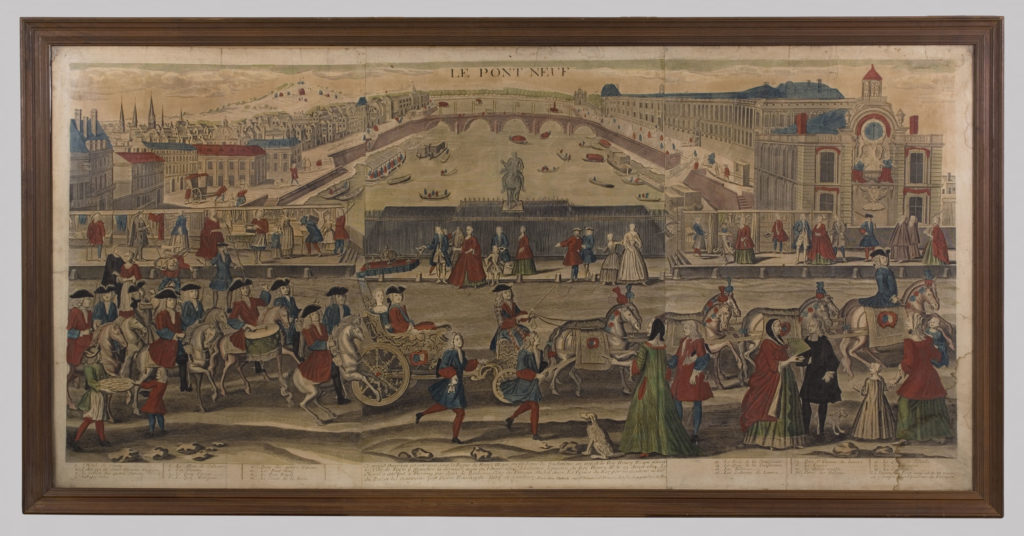In the grounds of the Petit Trianon, the beloved neoclassical villa of Marie Antoinette, sits one of her follies – le Temple de l’Amour, or Temple of Love. Each morning, as she rose from her luxurious bed and glanced out the window, the sight of its elegant Greek-style cupola filled her heart with joy. Marie Antoinette may have loved jewels and fabulous new dresses, and knew how to party, but she also craved the peace and solitude which was completely lacking in the ornate and formal world of the Palace of Versailles. This, she found in the gardens of her Petit Trianon, in her Temple dedicated to Love.
In 1774, her husband and new French king Louis XVI offered Marie Antoinette the Petit Trianon.
Vous aimez les fleurs, Madame, j’ai un bouquet à vous offrir
(You love flowers, Madame, so I have a bouquet to give you)

It had been built in the time of Louis XV (who really didn’t know how to stop building châteaux) and used for illicit trysts between he and his mistress, the Comtesse du Barry. The gardens at the time were French and very formal, and included a wonderful botanical garden fully stocked with all manner of herbs and medicinal plants. However, the new French queen was determined to have a place she could call her own. Just as she longed for a retreat from the rigidity of palace life, she also desired a garden free from constraints; and so created a fashionable English garden with meandering streams, grottoes and untamed arbours. Plants and flowers from all over the world made their way to the garden, and as the Empress Josephine would do just 30 years later, captains and botanists on the high seas were given instructions to bring their most beautiful and unusual flowers to be planted at the Petit Trianon.
But what is a garden without love?

In 1778, Marie Antoinette’s favourite architect, Richard Mique, finished constructing le Temple de l’Amour. The perfectly round Temple of Love sat alluringly on a small island in an artificial stream, accessible via a small wooden bridge. One ascends the seven steps to the marble platform, made with veined white, Languedoc red and Flanders marble, which are surrounded by twelve grand Corinthian columns. Gaze upwards and contemplate the intricacies of the sculpted rosettes and caissons, created by the master sculpteur Jospeh Deschamps.


But it’s in the centre that you’ll find love, with the statue Cupid fashioning his bow from Hercules’ club. Edme Bouchardon carved this graceful statue from one single block of white marble, completed in 1750. Cupid, who is the god of Love and the son of Mars, the god of War, has stolen the club of Hercules. He is smiling impishly as he carves himself a bow from Hercules’ weapon, with which he intends to shoot arrows into the hearts of unsuspecting lovers. The beautiful, twisting form sits perfectly in the circular space.

But the statue has a history. The one in Marie Antoinette’s Temple of Love is a copy, fashioned at the same time as the folly was constructed. The original, in 1750, was made for the palace of Versailles and placed in the centre of the Hercules Salon, but was deemed to be far too outrageous, not having the usual simpering or angelic poses one expected of Cupid. the god of Love.
“On that occasion, the Court gave good proof of its ignorance, of its lack of taste for the arts. What, so that is Cupid, they said, but it is a Cupid porter; but, that is not at all pleasant. . . . As it is the opinion of pretty women that decides everything in this country [France], and they did not find it to be the type of musky plaything they like, it was so discussed and criticized that it had to be removed from there, despite the artists, who called it a marvel, but who were regarded as imbeciles.”
Charles Nicolas Cochin (1715–1790)
Perhaps the placement of the statue in the Hercules Salon was also too much for Louis XV. The gorgeously painted ceiling of this room depicts the Apotheosis of Hercules, in which the triumphant hero arrives in his chariot after his wondrous victories, while the gods and goddesses of Olympia watch on in delight. It is supposed to be an allegorical representation of the King Louis XV and the power of the French monarchy. Would the king be happy to see a statue of the god of Love defeating Hercules, as in himself, particularly as at the time he was involved in a scandalous and very public affair with the Madame de Pompadour? Surely not. The statue was moved to the Château de Choisy, in the orangerie, where it could be seen by the king and his mistress as they continued their affair.
Marie Antoinette spent much of her time at the Petit Trianon. It was perfect for gatherings with friends, small parties, and for rendezvous where privacy was guaranteed. But it was also a superb setting to impress one’s visitors. In 1781, the Holy Roman Emperor Joseph II visited his sister, Marie Antoinette. A grand fête was planned:

A fête of a novel description, was given at Petit Trianon. The art with which the English garden was lighted, not illuminated, produced a charming effect: earthen lamps concealed by painted green boards, threw light upon the beds of shrubs and flowers, and brought out their several tints in the most varied and pleasing manner. Several hundred burning faggots in the moat behind the temple of Love, kept up a blaze of light, which rendered that spot the most brilliant in the garden.
Madame de Campan, Memoirs of the private life of Marie Antoinette, queen of France, 1823. Image from WikiCommons
Marie Antoinette’s Temple of Love was not her only folly – follies were very popular in the eighteenth century. There is the Belvedere, also in the English garden, where she took her breakfast, played music and sought comfort on hot days when all the doors were opened for any cool breeze to waft through. Perhaps more famous is her folly in the Queen’s Hameau, the medieval style farm and village she had built on the Trianon Estate, the Marlborough Tower which perches on the edge of the man-made lake. Of this Tower, Madame de Campan wrote: “the exterior stair, bordered with stocks and geraniums, seemed like a garden in the air”.

Much of Marie Antoinette’s life was controlled by others – her husband, the French court, the expectations and obligations placed on a Queen. The Petit Trianon was her escape, especially once she had children, and the Temple de l’Amour was her place where she could meditate on life, love and liberty. I imagine her walking there, in her white muslin dress, hands trailing over full bodied green leaves, brushing past lillies, and stopping to smell sweet scented roses, her children laughing at her side. Stepping up to the statue of Cupid, admiring his smooth marbled contours, and marvelling at the wonders of love.
Have you visited the temple of love at the Petit Trianon? Book your ticket here!

All photos remain the property of the author.




beautiful . thank you
Merci!